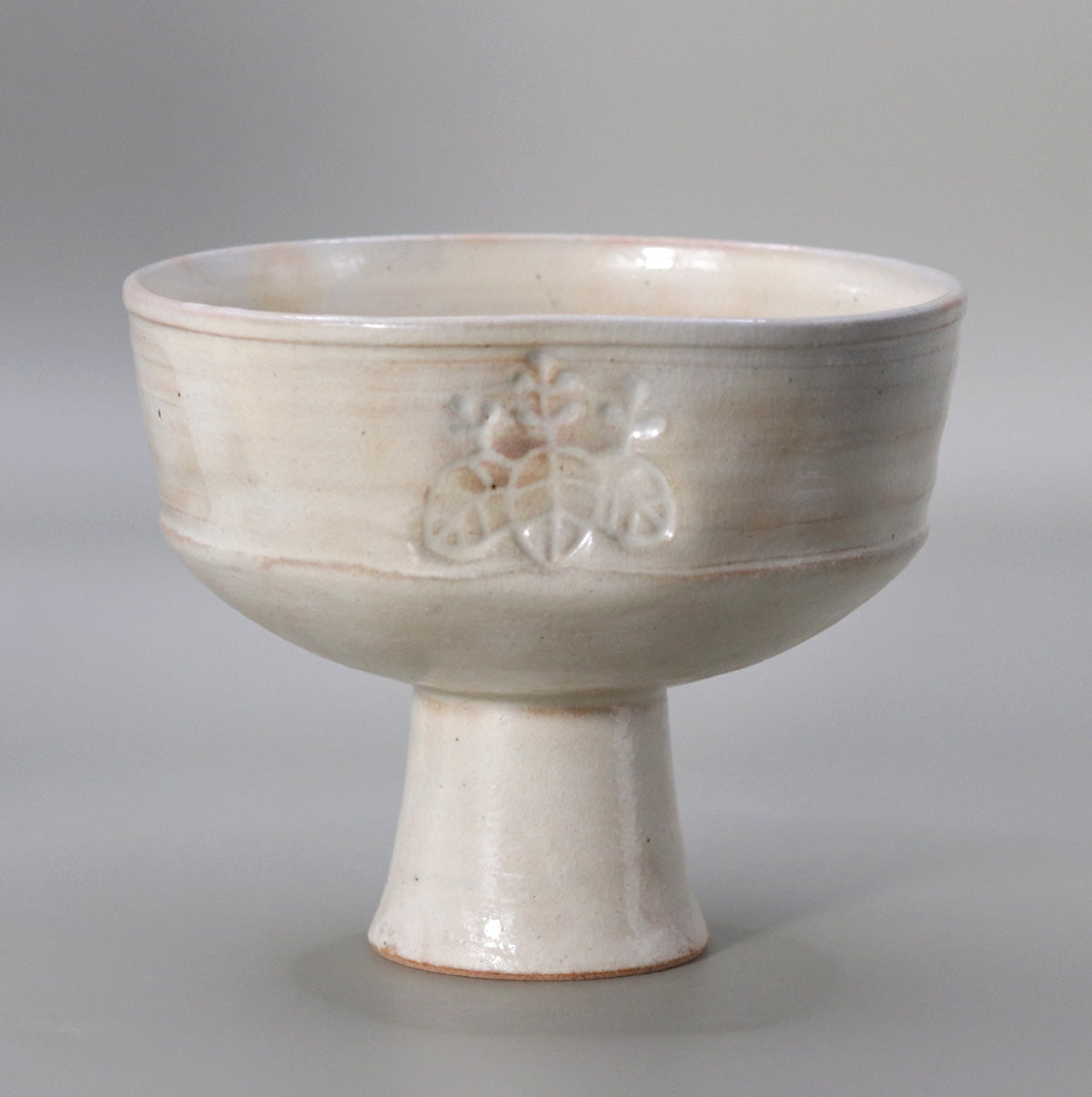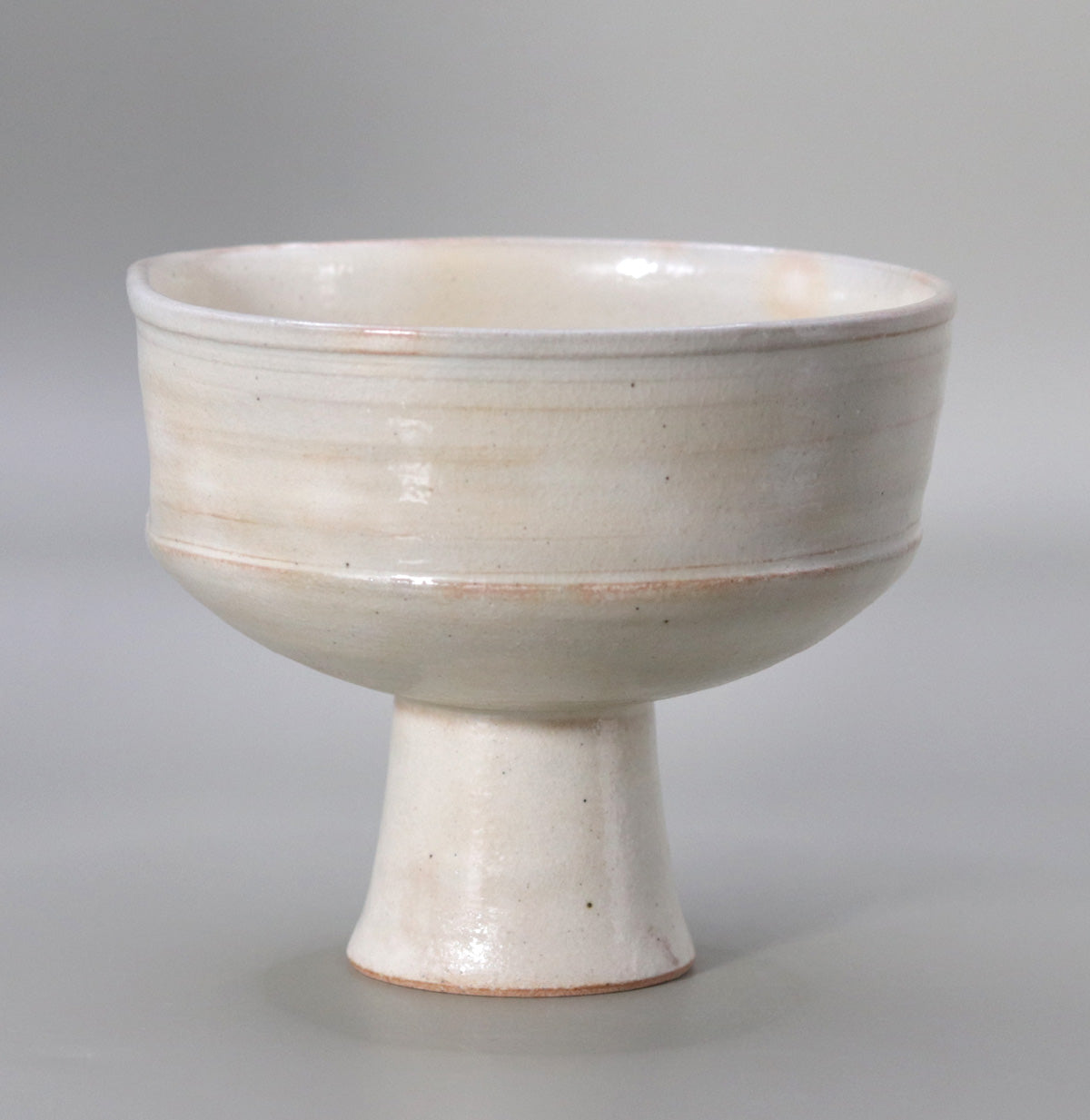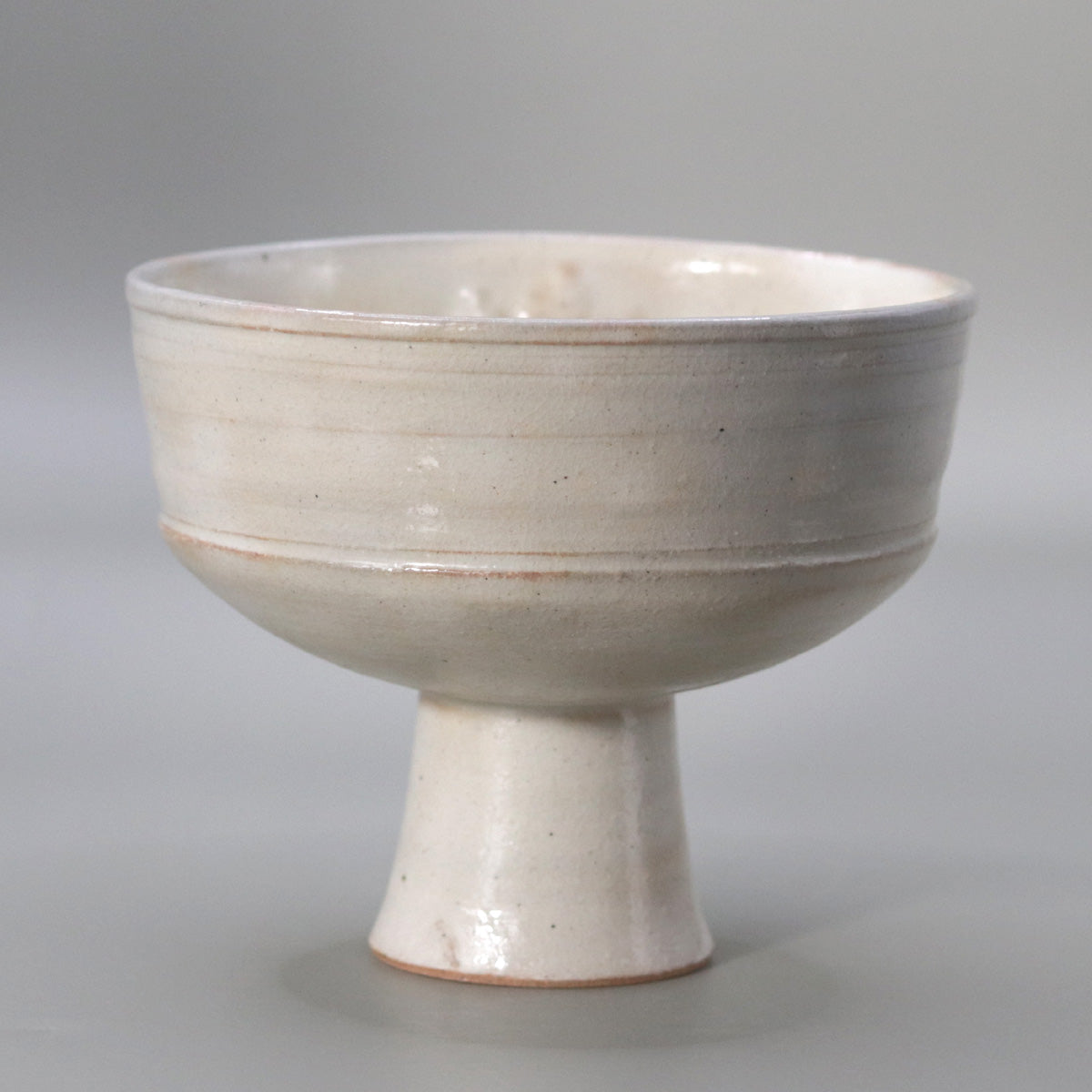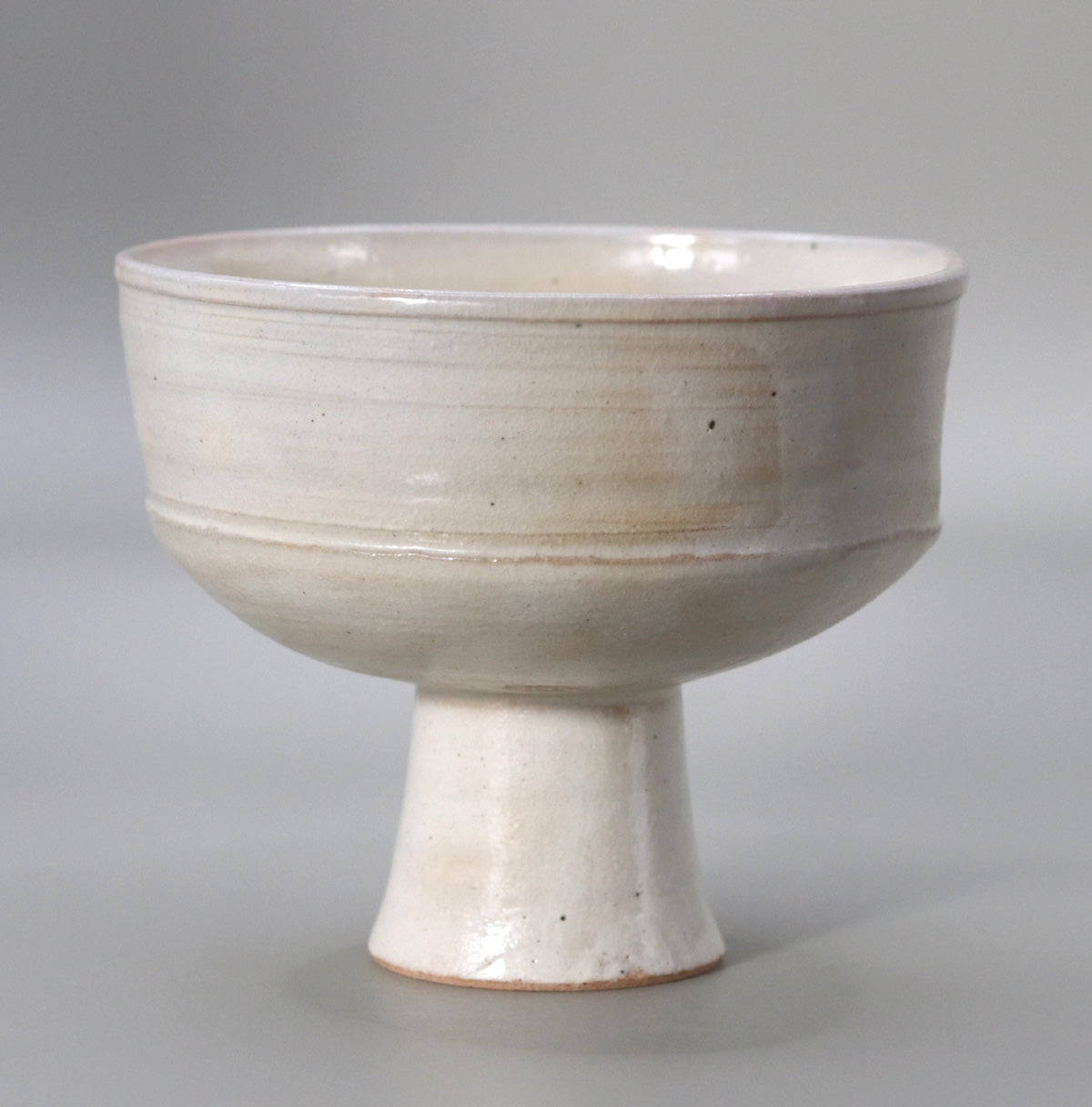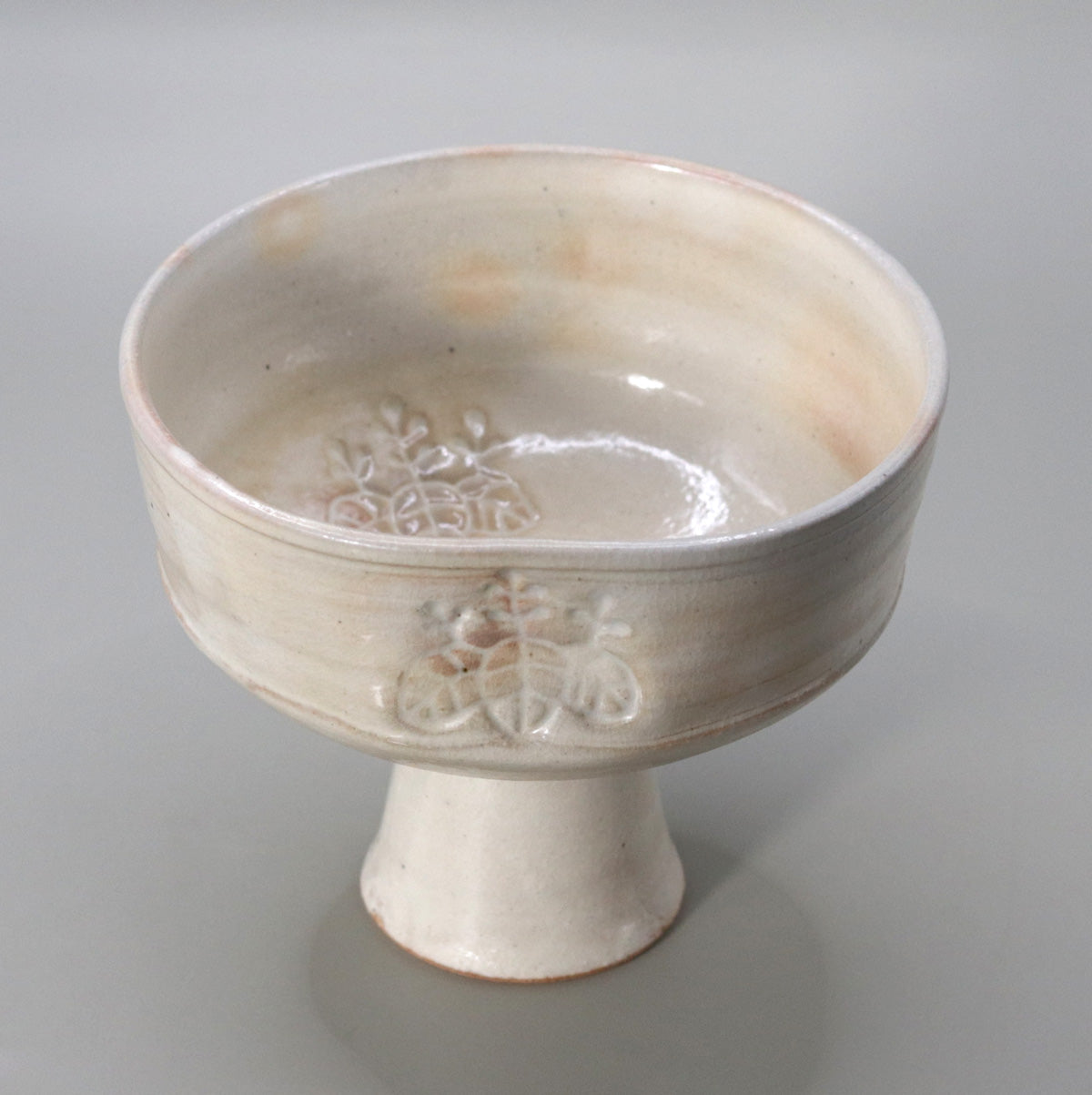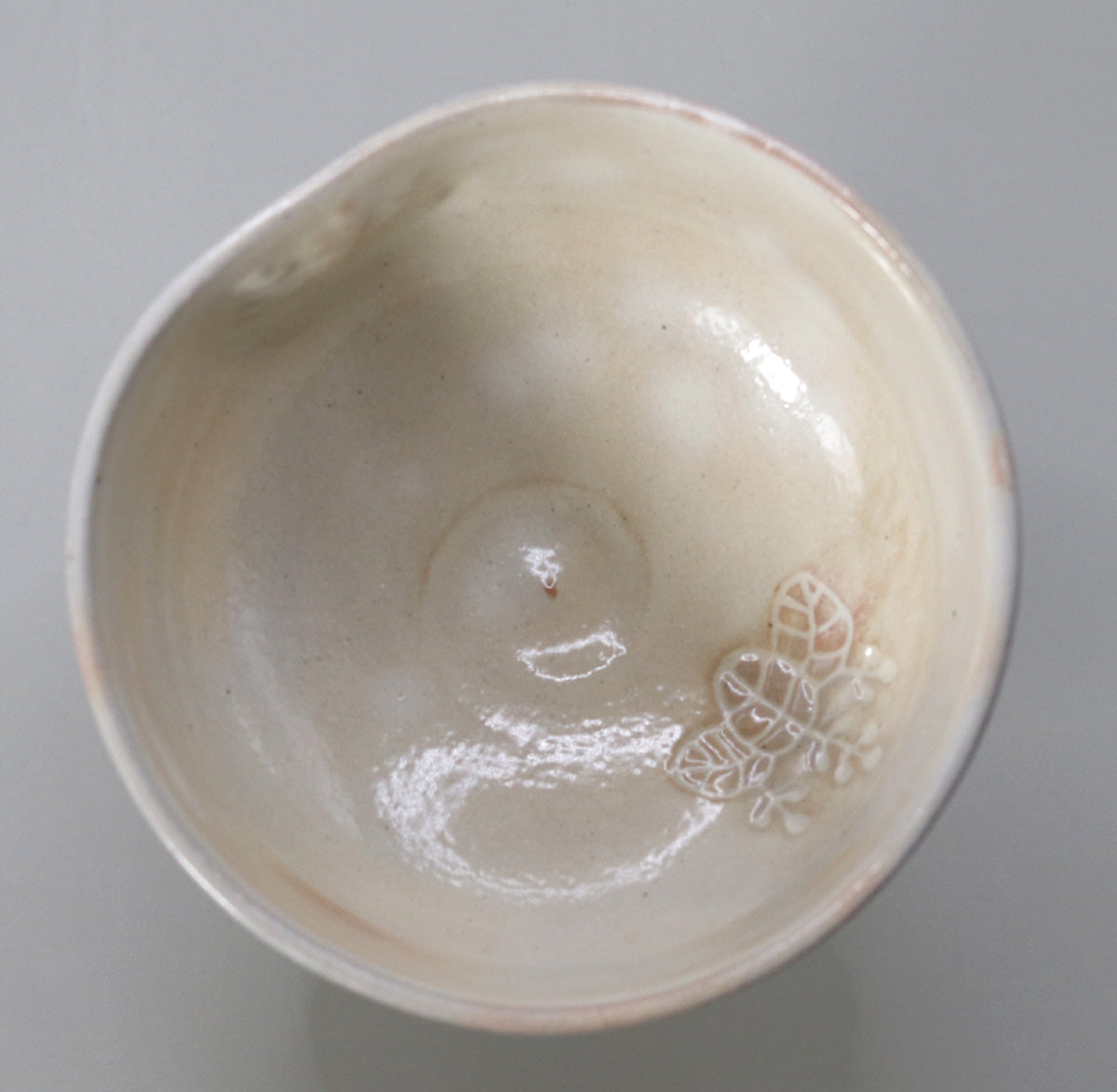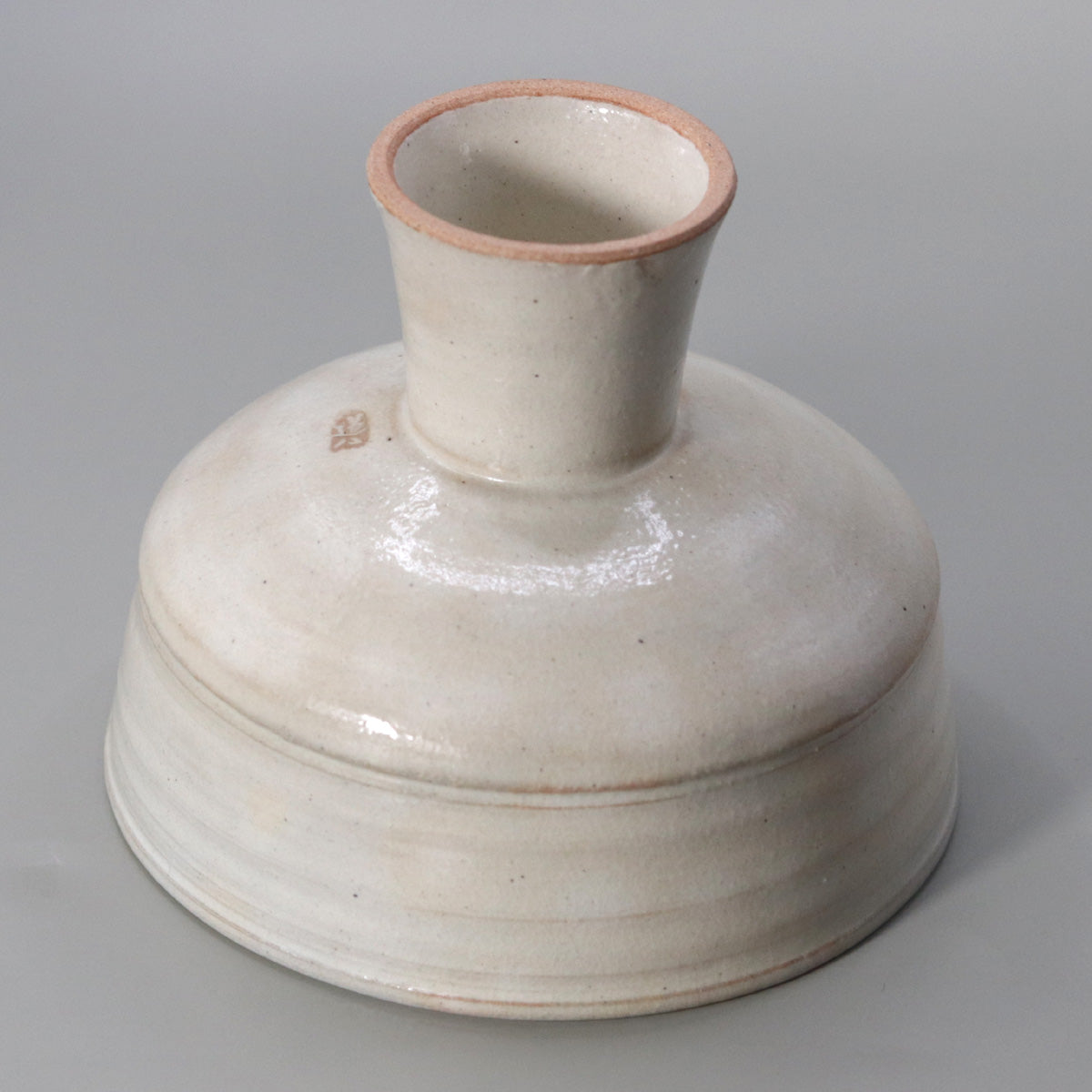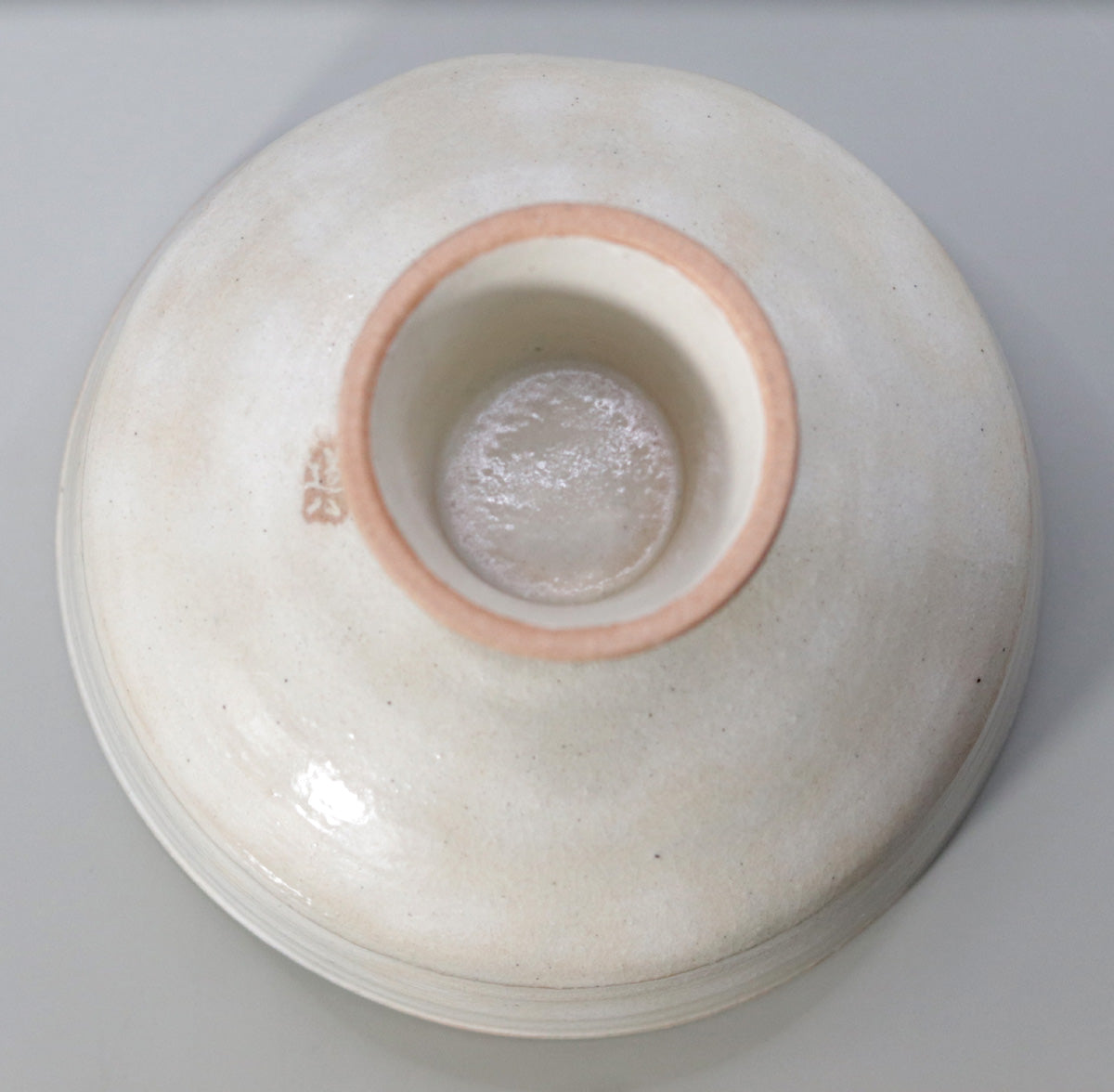Powder-drawn horse cup Dohachi Takahashi
Powder-drawn horse cup Dohachi Takahashi
Couldn't load pickup availability
Width: 12.3cm Height: 9.98cm
Kohiki Bajou teacup - Takahashi Michihachi, 9th
The slightly reddish milky white powdered glaze creates a soft look, and the slender horse-mounted sake cup shape with its high base gives this piece a dignified presence. This is a masterpiece that crystallizes Takahashi Michihachi's unique refinement and eye for antique style. Below, we will explain its appeal from five different perspectives.
1. Beauty of form - the elegance and practicality of the horse-riding sake cup shape
The name "bajohai" (a cup on horseback) originates from a vessel with a high base so that a military commander could easily hold the cup up while on horseback. This piece transfers this design to a tea bowl, with a bulging body and a trumpet-shaped base, creating a light, airy appearance that makes the entire cup appear to float in the air when placed on a table. The rim is slightly curved outwards, providing the functionality to catch the rich foam of matcha tea.
2. Glaze Tone - Snow-white finish of powdered porcelain with a subtle red tint
Kohiki, a technique in which a white coating of clay is applied to the clay body and then covered with a transparent glaze, is a technique that originated with the Buncheong ware of the Joseon Dynasty in Korea. In this piece, the iron of the base material is faintly visible from under the white coating, and pale cherry-colored "Gohonde" patterns are scattered throughout. The light brown fire color that appears during firing adds warmth to the scene, and with repeated use, tea stains will seep into the cracks, giving the piece an appearance of pale ivy leaves falling on snowy skin.
3. Design: Paulownia crest relief on the body
On the front of the body, a paulownia crest motif, which was also used in the previous candy-glazed horse-riding sake cup, is shallowly carved into the surface, creating a faint, auspicious effect. Half-melted under the glaze, its hazy expression gives it a sculptural elegance that is different from painted work. This motif, which adds subtle shadows to the all-white world, brings rhythm and a sense of story to the tranquil surface of the vessel.
4. Techniques: White Glazing and Reduction Firing
The Kohiki process, in which a moderate thickness of white clay is applied after bisque firing, and after drying, a transparent glaze is applied and fired in a reducing flame, is difficult to determine the thickness of the coating and the degree of reduction, and requires advanced kiln-handling techniques that take into account crazing due to temperature differences and the appearance of the Gohon. By flowing the glaze evenly all the way down to the legs and wiping the tatami mat (ground surface) cleanly, we have achieved both visual unity and safety.
5. Historical and cultural background: The “metaphor” of Kohiki and Bajou-sake
Kohiki was a type of tea bowl imported from the Korean Peninsula in the late 16th century and was beloved by tea masters, and was also called a symbol of wabi-cha (traditional Japanese tea ceremony). On the other hand, the Bajo-sakabayaki style was prized as a type of sake cup in the trend of revering Chinese goods, and is said to have been adopted by tea masters in the Edo period as a playful attempt to "liken a sake cup to a tea bowl." By overlapping two different classical styles, this piece pays homage to the past while also presenting a modern interpretation that stands out in the context of modern tea ceremonies.
The Takahashi Dohachi family has been known as a prestigious Kyoto ware color painting family since the late Edo period. The ninth generation master graduated from the Department of Clothing Design at Kyoto Bunkyo Junior College, majored in design, and then went on to the Department of Molding and Research at Kyoto Prefectural Ceramic Technical College, and further solidified his technical foundation at the Kyoto Industrial Research Institute.
In 1996, he began to study pottery under his father, Dohachi Yashiro, and began making pottery in earnest.
In 2012, he took on the name of the ninth Takahashi Dohachi.
His style, which combines the sense of form cultivated in clothing design with the traditional techniques of Kyoto ware, has breathed new life into the Dohachi family of pottery and displays a sophistication that stands out in modern tea ceremonies and gallery spaces.
The milky white Kohiki glaze quietly reflects light, and the paulownia crest floats in soft shadows, making this rare tea bowl a rare combination of the tranquility of wabi and a celebratory atmosphere. When you pick it up, the legs rest naturally on your fingers, and the light center of gravity guides your tea ceremony movements gracefully. Whether you incorporate it into your daily tea ceremony, such as the first tea ceremony of the spring or the last tea ceremonies in autumn, the green of the matcha will shine in the milky white bowl and completely change the atmosphere of the tea room. Please cherish it for many years to come, and enjoy the sight of the Kohiki deepening with age and the outstanding beauty of Takahashi Michihachi's sculpture.
Share
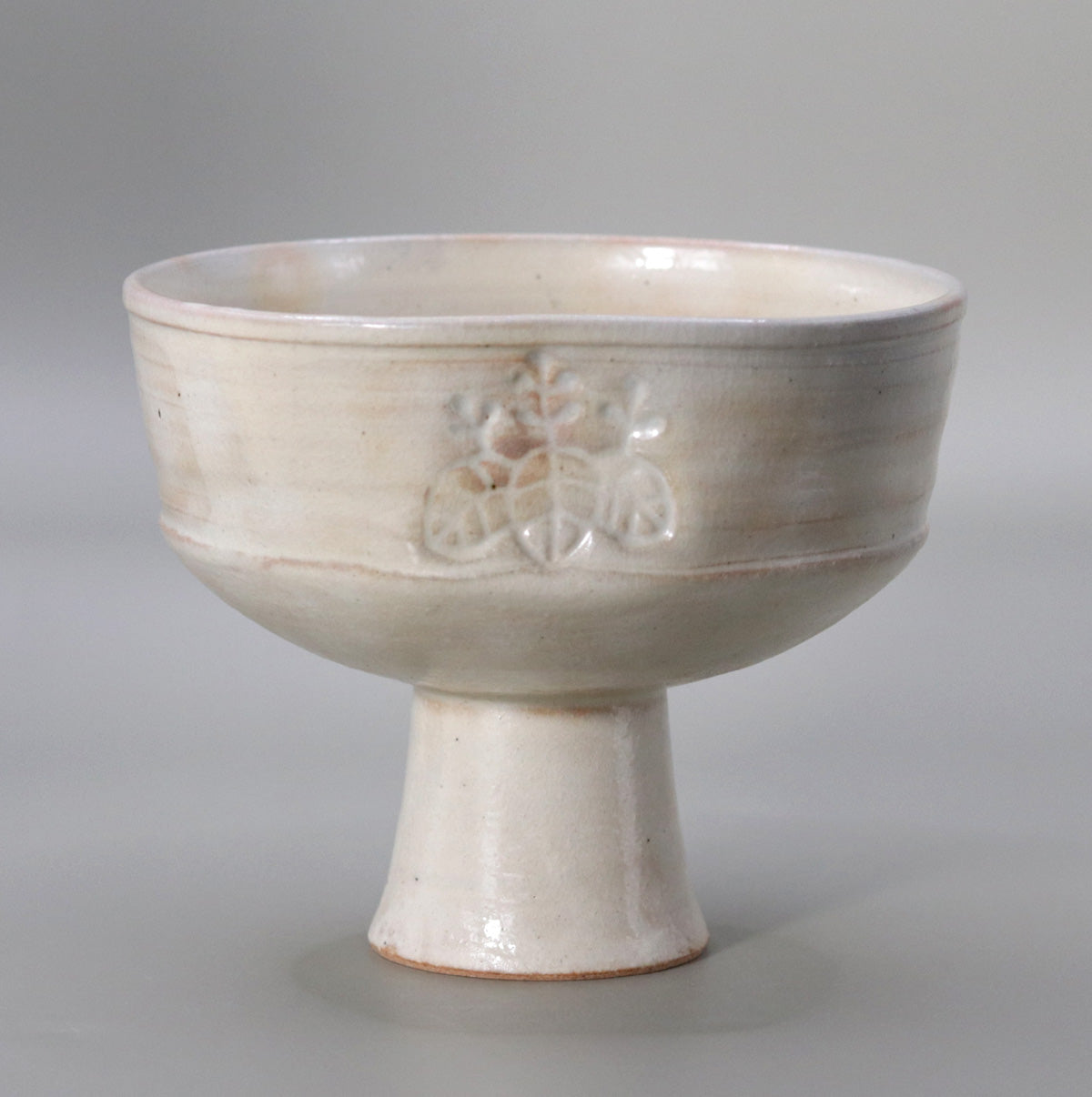
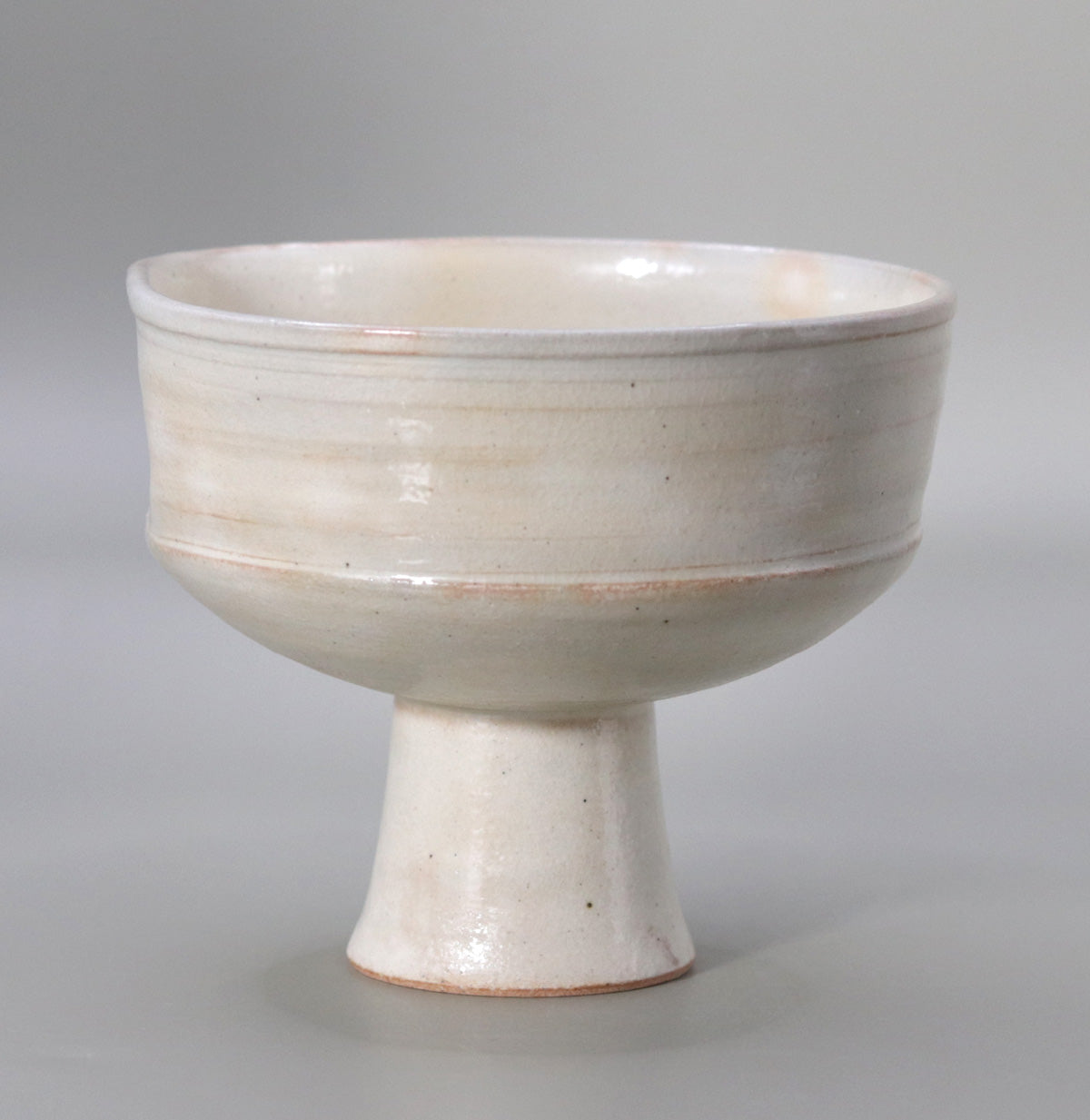
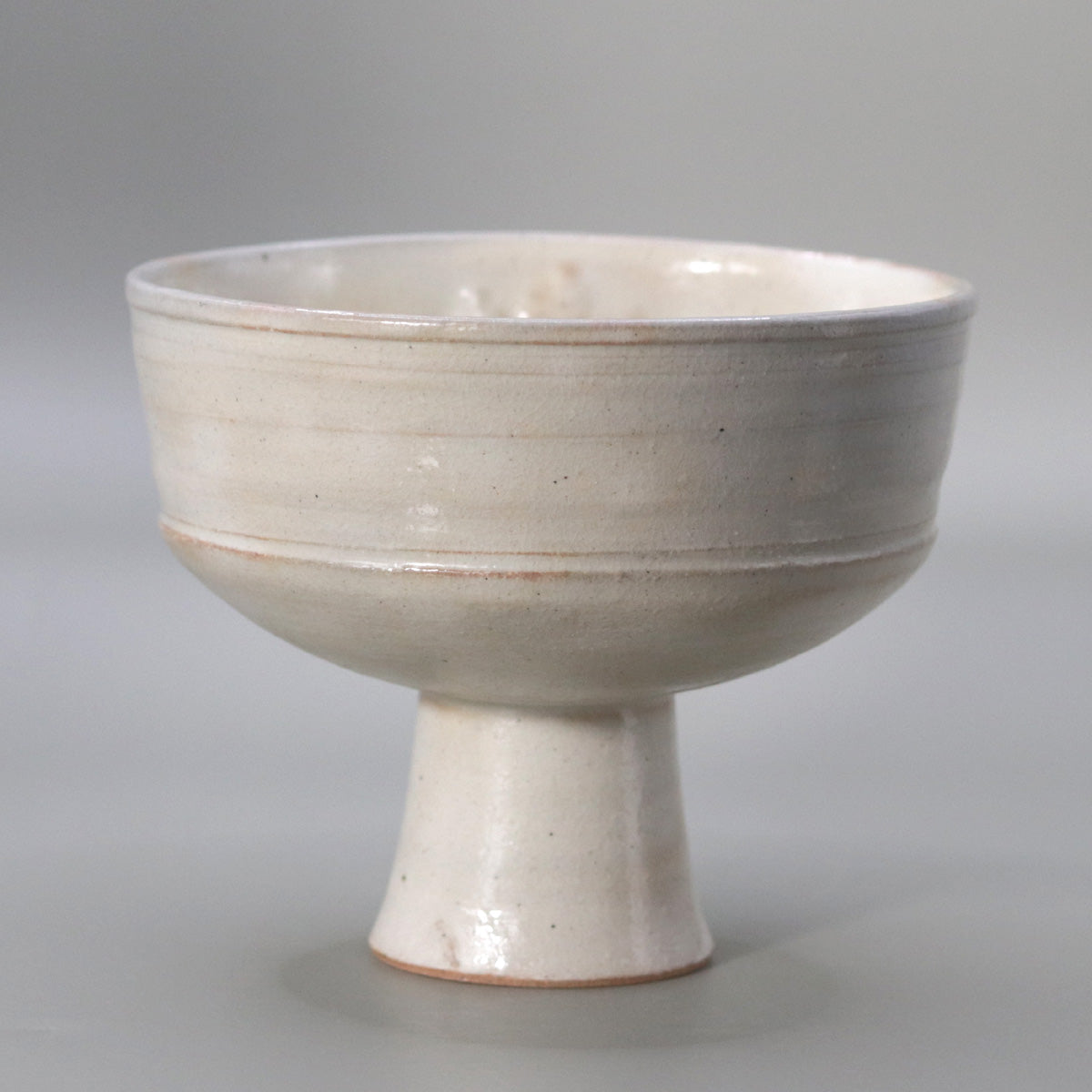
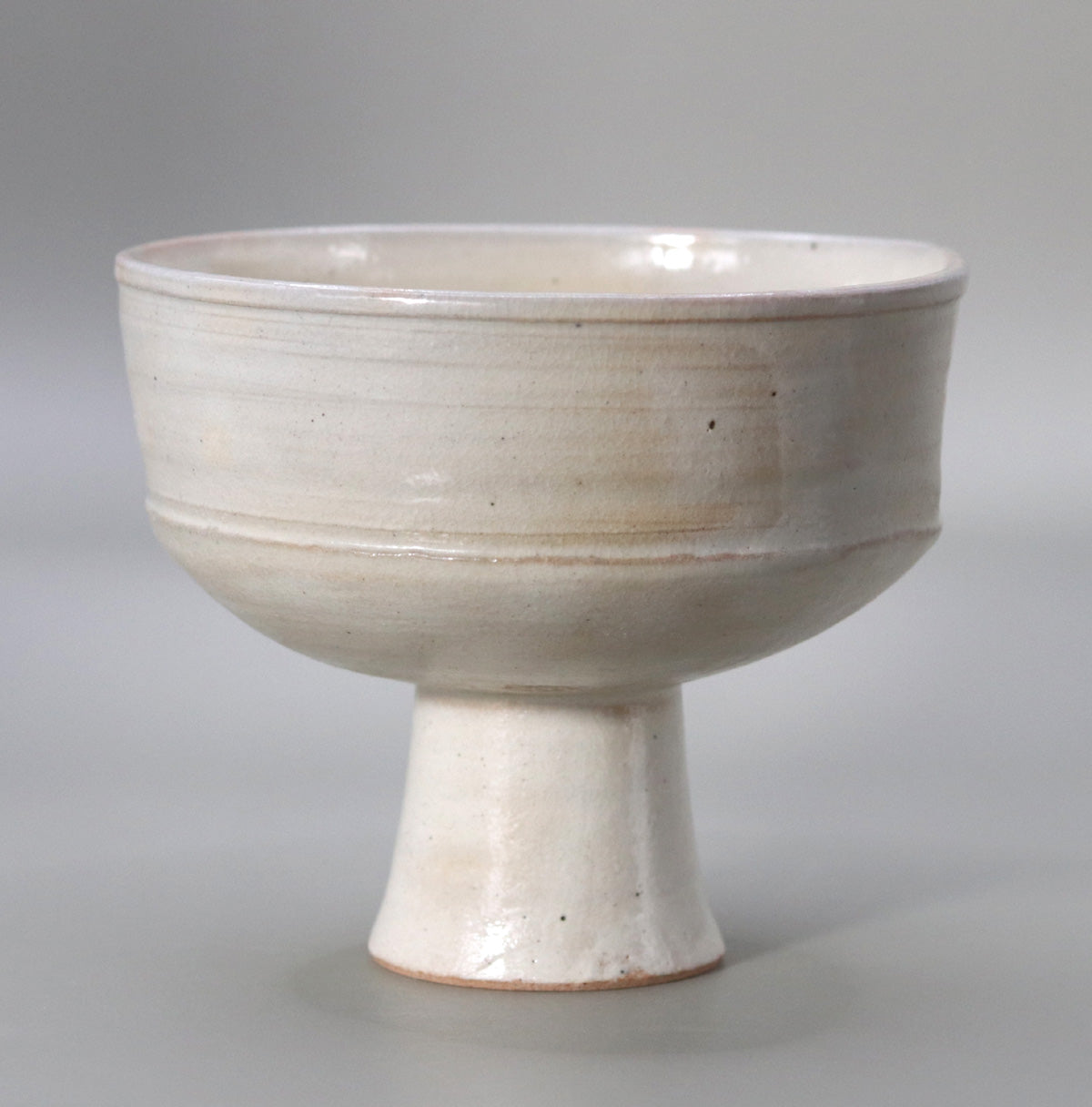
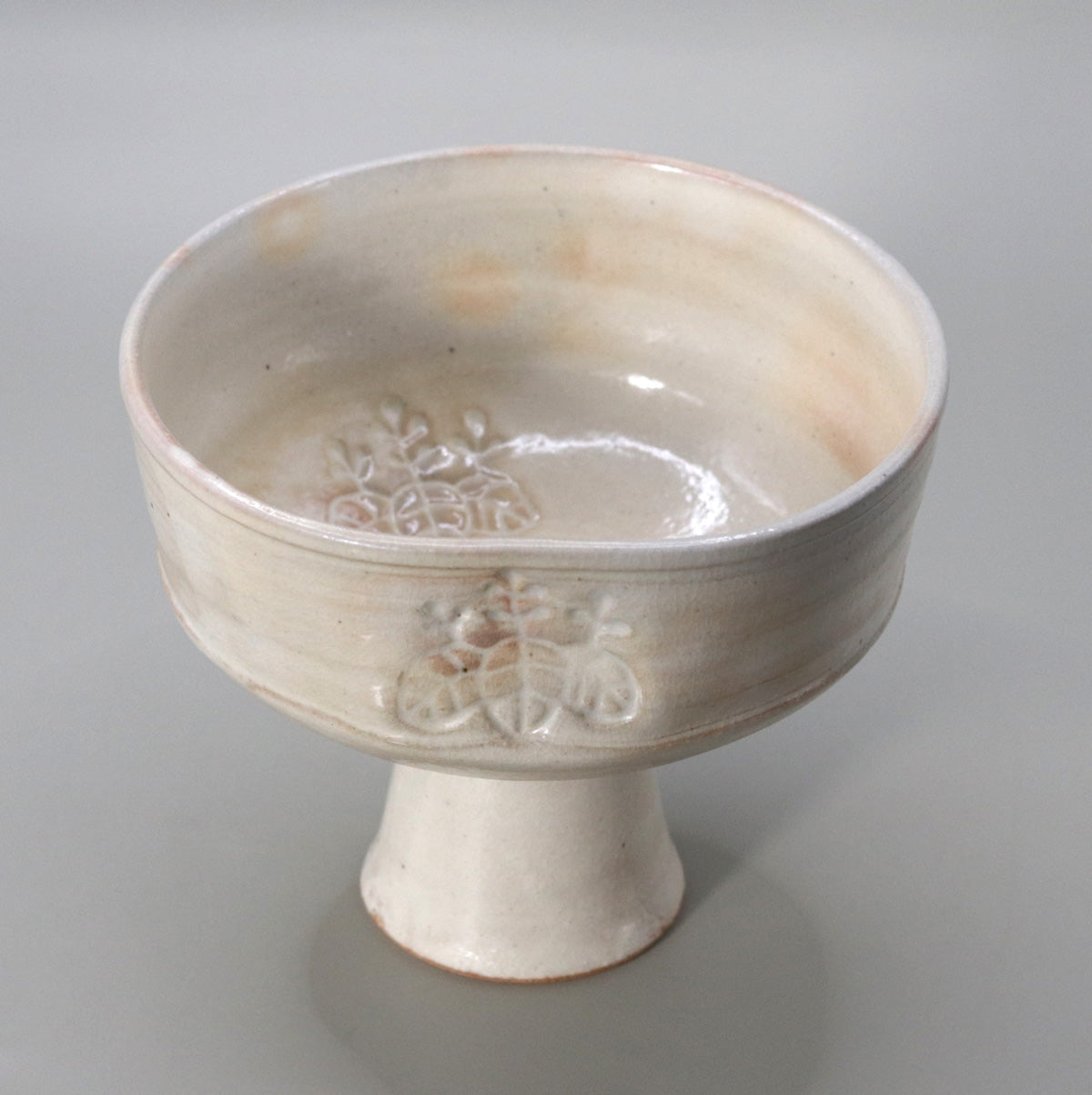
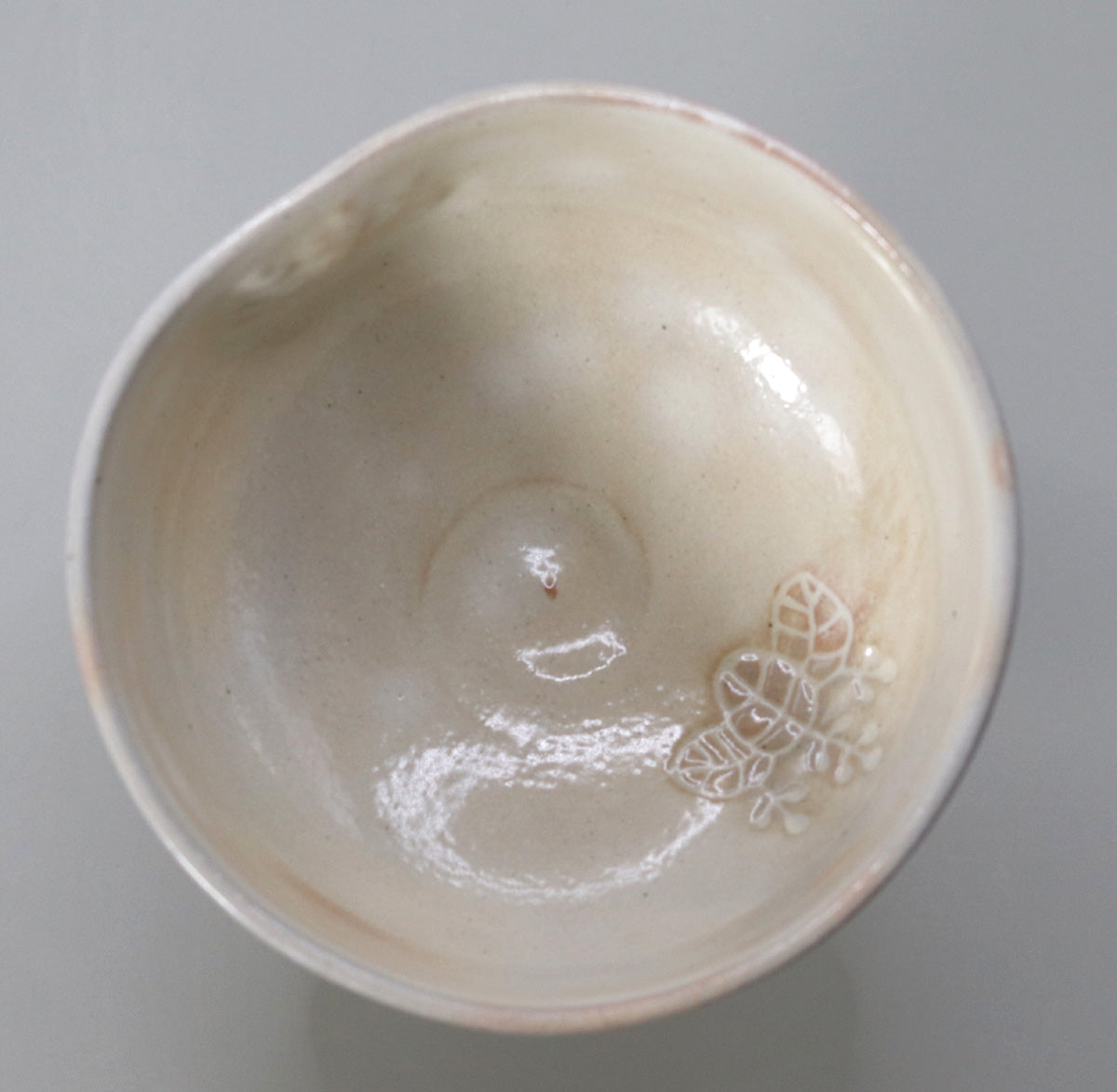
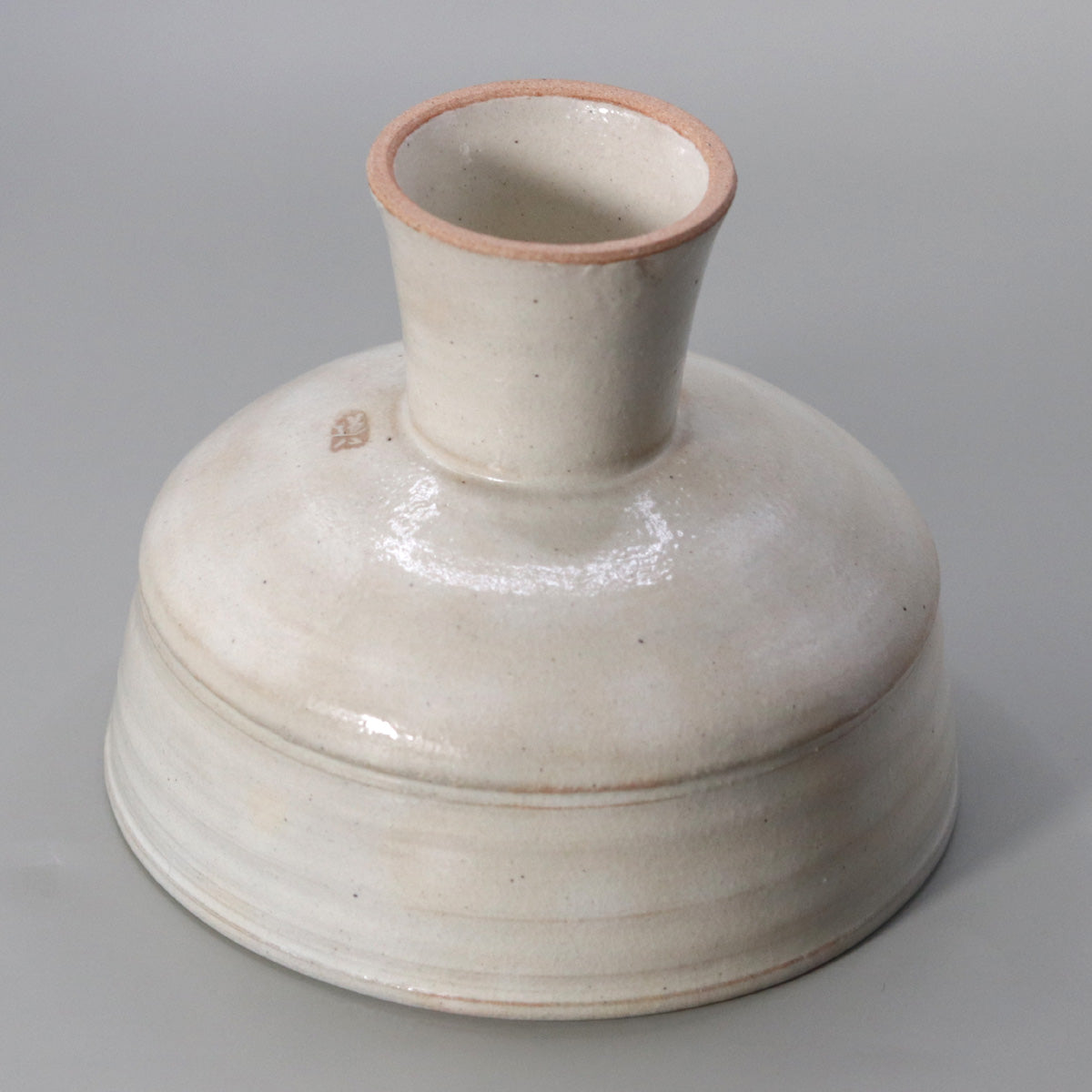
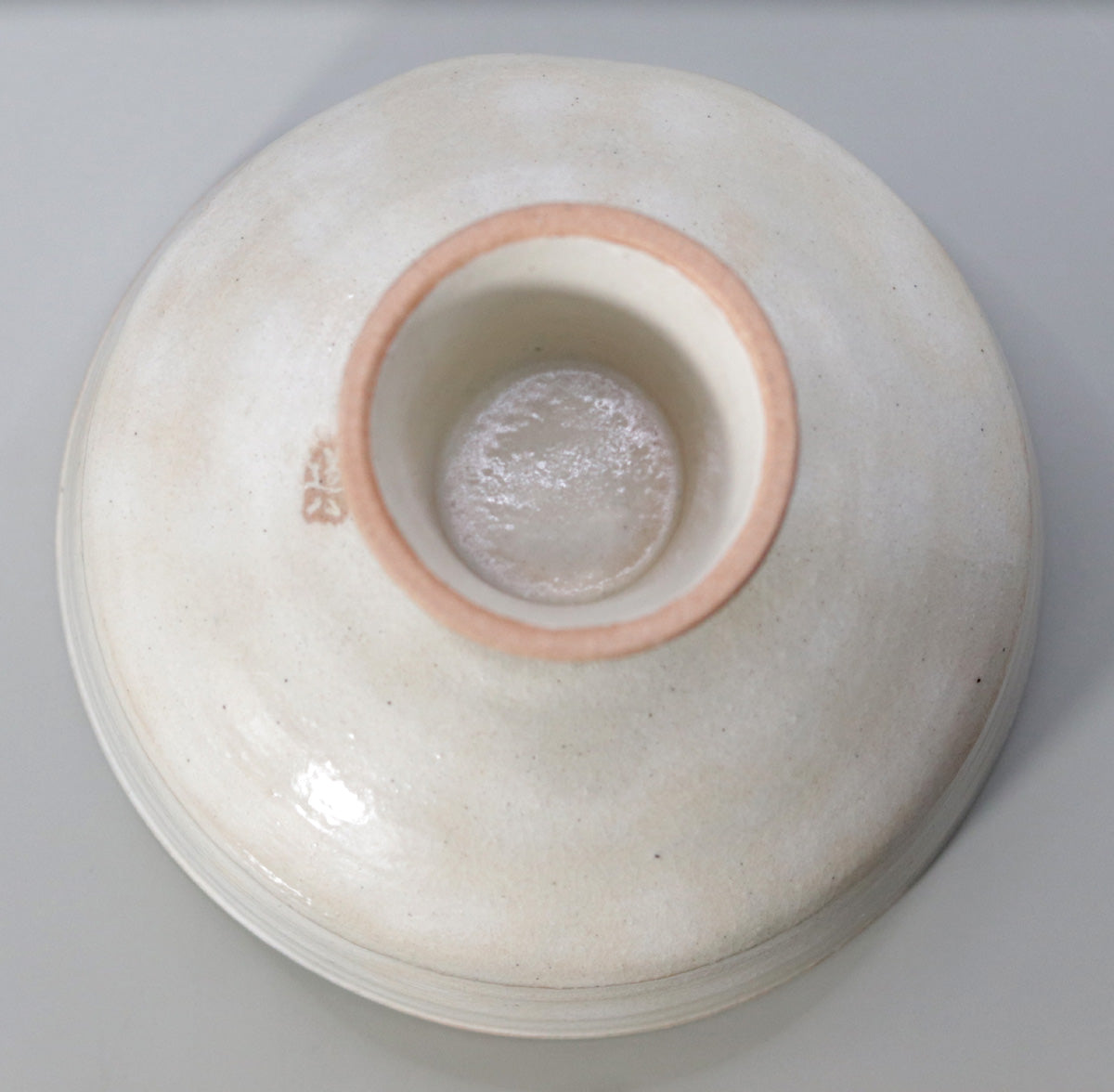
Multi-Column
-
[I will send it to you quickly and carefully]
We carefully package each product in a way that suits it best.
Also, delivery times vary depending on the piece (vessel, etc.).
Items that already come with a box will be shipped within 1-3 days of the order date.
For items that require a box to be made after your order, it will take approximately 30 days for production to be completed and then shipped.
In either case, once we have confirmed your order, we will contact you by email to inform you of the delivery date.
-
[Requests when purchasing pottery]
Even products that look the same may differ slightly in color, shape, size, etc.
The way the glaze is used, the power of the kiln, the firing method, the season, and the humidity also affect the appearance of the pottery.
Please understand the individuality of each piece of pottery and enjoy the unique warmth of handmade.

